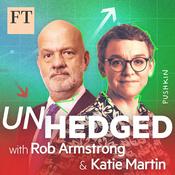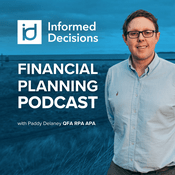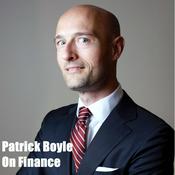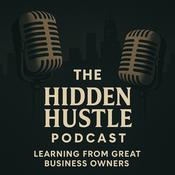42 episodes

S2 Ep 6 | Change F - F - F - Freeze
19/12/2025 | 25 mins.
Welcome to Series 2, Episode 6! Angus and Pete explore the dreaded Change Freeze, a vital IT strategy often implemented during peak periods like Christmas. The discussion was prompted by a listener who had a travel nightmare due to a systems upgrade that went wrong during the busiest time of the year. The hosts delve into what the freeze is, why it's critical for service stability, and how poor planning can lead to the infamous "mad dash" effect. Here are the key show notes from the discussion: • The Purpose of a Change Freeze: A change freeze is a predefined period where non-essential changes to systems are halted, acting as a safeguard for system integrity and availability. This is critical during periods of massive demand, such as Christmas, when high operational demands coincide with limited staff availability. • The Risk of the "Mad Dash": A disadvantage of long freezes is the "mad dash effect," where teams rush to cram everything in beforehand. This pressure can lead to poor decisions and mistakes, inadvertently introducing the bugs that the freeze was intended to prevent. • Planning and Communication are Key: To prevent chaos, planning must start early—around June or July for Christmas—ensuring all stakeholders are aware, including customer service leadership. Clear, simple, non-technical language should be used to communicate key dates and expectations. • Prioritizing the Customer: Companies should be transparent with customers about issues, using banner notices or updated holding messages, as transparency can make people "far more willing to work with you". Stable, protected systems allow agents to focus on complex, high-emotion issues and turn problems into "nice experiences". • Measuring True Success: Success criteria for a freeze should not rely solely on meaningless metrics like system uptime. Instead, organizations must focus on customer experience metrics like First Contact Resolution (FCR), Customer Effort Scores, and customer complaints, which truly reflect the outcome of the stability effort.

S2 Ep 5 | CX Insider: Rich on Product Management
12/12/2025 | 38 mins.
This episode features CX Insider Rich, a Commercial and Strategy Product Manager, who details his demanding role. He argues that solid process trumps technology and criticizes the industry’s focus on building complex "Swiss Army knives" without ensuring they are consumable and adopted. Rich also highlights the extreme difficulty of building viable business cases amidst the risky, unclear pass-through charging models for AI. Key takeaways: • Process Trumps Technology: Product success relies on having the People, Systems, and Process (PSP) in place, with the process being much more important than the technology itself. Companies must ensure they can sell, support, and bill for a product before taking it to market. • The Adoption Focus: The industry emphasis must shift away from simply deploying products to ensuring they are adopted and used. Vendors often miss this critical step by focusing solely on the initial sale, building capability without sufficient thought to real-life use. • The AI Pricing Risk: Current AI models often use pass-through charging, which Rich views as lazy product management. This practice creates an undefined and unacceptable financial risk for businesses, making it nearly impossible to build predictable and justifiable business cases. • Knowledge Velocity Problem: The exponential speed of technological change (products changing twice a week) creates a knowledge velocity problem and a deficit of genuine experts. Vendors must educate buyers by articulating clear, real-life use cases or scenarios, not just features. • Keep It Simple: Vendors must stop over-complicating things and focus on clarity and simplicity. Rich notes that if a vendor cannot clearly explain a complex product to him—an experienced product manager—they cannot expect him to successfully explain it to internal stakeholders or customers.

S2 Ep 4 | News Beat: December 2025
05/12/2025 | 29 mins.
This episode of The Angus and Pete Show reviewed the recent CC Expo and tackled two major press articles concerning the state of AI adoption in the industry. The core discussion centred on the acknowledgment of the "hype" surrounding AI, the necessity of delivering real business value, and the critical importance of moving contact centres from perceived cost burdens to recognized revenue generators. The hosts emphasized that while AI offers immense potential for efficiency and new data insights, poor execution and a failure to address foundational business process issues will guarantee failure. Here are the key show notes from the discussion: • Focusing Beyond the Hype: While the CC Expo strongly featured AI, omnichannel engagement, and agent productivity, vendors acknowledged the significant "hype" around the technology. Demos were often focused on narrow use cases and aimed at achieving efficiency and cost-saving, with "very little about the customer experience". • The Shift to Outcome Metrics: Organizations are increasingly redefining contact centres as potential revenue engines. Traditional efficiency metrics (like AHT) are being replaced by outcome-based metrics, such as customer retention, selling success, and customer lifetime value, reflecting a massive change in business focus. • Unlocking the Data Goldmine: AI provides 100% real-time analysis of all consumer interactions, turning conversations and activities into "actionable insights". This high level of accuracy enables instant fraud detection and the ability to spot opportunities for product innovation. • ROI Requires Proper Implementation: Companies with successful AI implementations report high returns (up to 3.5 times investment), supported by tangible metrics like a 14% increase in issue resolution per hour. However, only 25% of contact centres have successfully integrated AI automation, often due to poor execution. • The Need for Strategic Rethink: Success comes only when businesses commit to transformational thinking, not by simply applying AI to "old broken processes". Those who hesitate or fail to move past small-scale pilot projects risk losing competitive ground very quickly.

S2 Ep 3 | It's Not About the Tech, Stupid!
28/11/2025 | 30 mins.
In this episode of the Angus and Pete Show, we talk about customer engagement and the painful disconnect many people feel when dealing with companies. Drawing on reports from Contact Babel, we discuss why technology alone can't fix customer experience. The real secret is empathy and focusing on core customer needs: speed, convenience, and the human touch. We also look at the massive financial stakes—great service earns a premium, but one bad interaction can make a customer walk away fast. ### Key Takeaways * *Prioritize the fundamentals.* Speed, convenience, and friendly service are non-negotiable must-dos for a great experience. Focus investment on technologies that support these benefits, not just on cutting costs. * *The human touch matters most.* Customers overwhelmingly want interaction with a real person, especially when things go wrong. AI should be used to augment agents—giving them tools and insights to enhance empathy and compassion—not to automate the relationship away. * *The stakes are high.* Great service allows businesses to charge a price premium, potentially up to 16%. But failure is costly: 32% of customers globally will abandon a beloved brand after just one bad experience.

S2 Ep 2 | CX Insider: Uncle Ken on the Experience of Experience
14/11/2025 | 45 mins.
Angus, Pete, and the highly experienced Uncle Ken, provide a sharp critique of the current state of the CX and Contact Centre industry. The key takeaway is that the constant "noise and burbling about artificial intelligence" is causing fragmentation and distracting the industry from crucial basics. The hosts and Ken conclude that high turnover among contact centre managers, combined with sellers who have lost foundational knowledge, necessitates an urgent re-education process across the industry. Here are the concise takeaways: • Boomers Are Not Anti-Digital: Older customers (boomers) are highly digital. If they use the telephone, it's because they are "unforgiving" and frustrated by digital channels that fail or offer bad service, proving that high expectations drive channel choice, not age. • AI Hype Focuses on Costs: AI implementations are often "siloed" and appear primarily driven by achieving "cost cutting and efficiency" for the business, rather than delivering actual benefits or a better experience for the customer. • Don't Automate the Mess: The hype around AI has "hijacked the finishing off of the digital first story". Implementing AI before sorting out basic digital channels and data only results in technology being "very analytical and very automatic with the mess that you've already got," which makes things worse. • Outbound Tech Remains Valuable: While outbound calling (just dialing a list of people) is "dying on its feet," the underlying technology remains highly useful for improving customer experience (CX) and efficiency. Examples include using call-back systems (like Qbuster) or sending pre-call texts to alert customers to an incoming call. • Seller Knowledge Deficit: The industry suffers from a lack of fundamental knowledge, exacerbated by contact centre manager tenure decreasing to about 2.5 years. Sellers who claim to be experts are often "not worthy of the badge" and must step up to educate buyers and "sense-check" RFPs. • Measure the Fundamentals: Sellers must be able to understand and apply basic contact centre mathematics, such as Erlang for voice and Little's law for digital channels, to accurately build Return on Investment (ROI) models. New technology will "fail" the consumer if it is not developed with the fundamental ability to "measure and manage what's going on".
More Business podcasts
Trending Business podcasts
About The Angus & Pete Show CX Podcast
Listen to The Angus & Pete Show CX Podcast, The Prof G Pod with Scott Galloway and many other podcasts from around the world with the radio.net app

Get the free radio.net app
- Stations and podcasts to bookmark
- Stream via Wi-Fi or Bluetooth
- Supports Carplay & Android Auto
- Many other app features
Get the free radio.net app
- Stations and podcasts to bookmark
- Stream via Wi-Fi or Bluetooth
- Supports Carplay & Android Auto
- Many other app features


The Angus & Pete Show CX Podcast
download the app,
start listening.





































